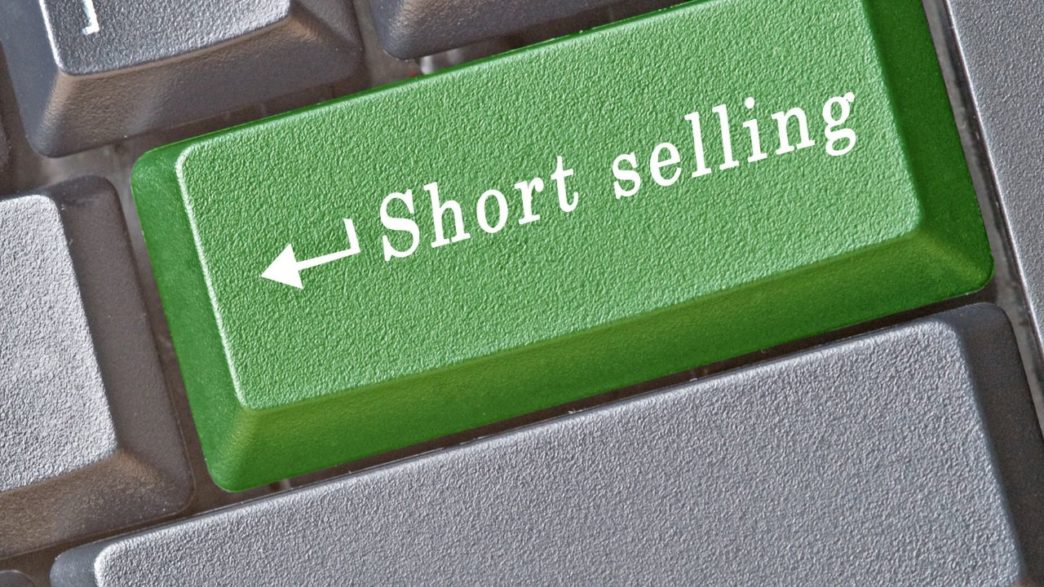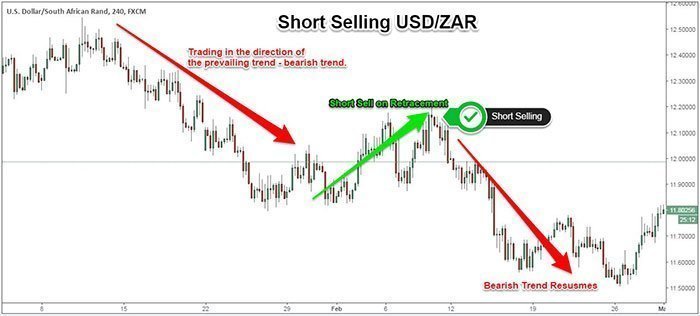
Compare Forex Brokers!
Compare top Forex brokers side-by-side and find the best fit for your trading needs. Start your comparison now!


In Forex trading, it is possible to profit from the falling prices of a currency through selling short. Short selling is used when the trader anticipates of a price drop of the asset and is unique to CFD trading. In short selling, a trader opens a trade by selling a currency pair as part of an agreement with the market that the trader will buy the same asset at a future date.

If the price of the currency pair declines as expected, the trader can close the position manually by using with a buy action, or automatically with a take profit order to make a profit on the trade.
To understand short selling better, let’s first examine what happens when a long (buy) trade is placed. If you buy the EUR/USD currency pair, you actually buy the euro (the base currency) and simultaneously sell the U.S. dollar (the quote currency).
If the price moves higher after you’ve opened the trade, you can close this long (buy) position by selling the pair at a higher price. In this case, you will have made a profit.
With a short (sell) trade, the process is exactly the other way around. If you sell the EUR/USD, you are buying the U.S. dollar (the quote currency) and at the same time, you are selling the euro (base currency). If the price moves lower after you’ve opened your short trade, you can close this short (sell) position by buying back the pair at a lower price.
In this case, you will have made a profit. In effect, a short (sell) trade on the EUR/USD is exactly the same as a long (buy) trade on the USD/EUR because the euro is sold while the U.S. dollar is bought.
However, on your Forex trading platform, this currency pair is only quoted as the EUR/USD which means that there isn’t an option to place a long (buy) trade on the USD/EUR. So, to buy the U.S. dollar against the euro, your only option is to enter a short (sell) trade on the EUR/USD.
By only using one form (e.g. the EUR/USD) to combine two currencies in a pair, the process of analysing and trading currencies is simplified and streamlined. If every pair had two forms, traders would have to deal with different price quotes, pip value calculations, and charts.
For example, if the EUR/USD traded at 1.11111 dollars per euro, the USD/EUR would be quoted at 0.90000 euro per dollar.
Handy tip: Any trade action (buy or sell) is focussed on the base currency of a currency pair. The base currency is the first currency in any pair. For example, if you open a long (buy) trade on the EUR/USD, you are buying the euro which is the first currency in this pair. If you open a short (sell) position on the EUR/USD, you are selling the euro.
In this example, a bearish trend is observed on the USD/ZAR currency pair. After a decent move lower, a short entry is taken as the price retraces against the predominant downtrend. Soon after the short trade is placed, there is a resumption of the bearish trend and the short position moves deep into profit.

A short (sell) trade which is executed with a market order will be filled at the best (highest) bid price which is available at that moment. When a short trade is liquidated, it is closed at the lowest ask price which is available at that moment. To see how the bid and ask prices are plotted on a Forex chart, take a look at our guide to Forex trading for beginners.
Unlike a short stock CFD trade, that theoretically carries unlimited risk, short selling a currency pair carries exactly the same risk as buying it. In essence, the mechanics of long and short currency trades are the same. The only difference is direction: a short position will profit when the price declines, while a long position profits when the price moves higher.
the price declines, while a long position profits when the price moves higher.
Explore more resources that fellow traders find helpful! Check out these other guides to enhance your forex trading knowledge and skills. Whether you’re searching for the best brokers, educational material, or something more specific, we’ve got you covered.